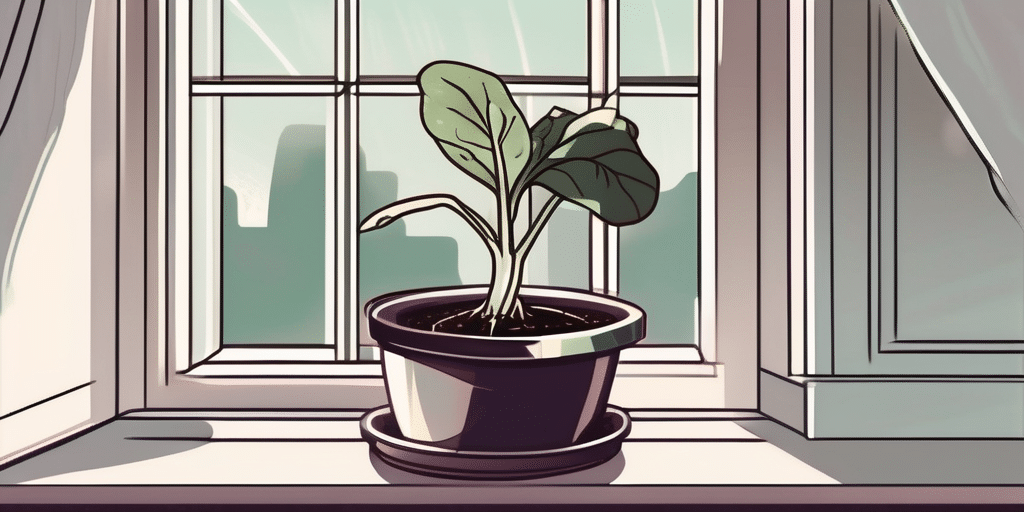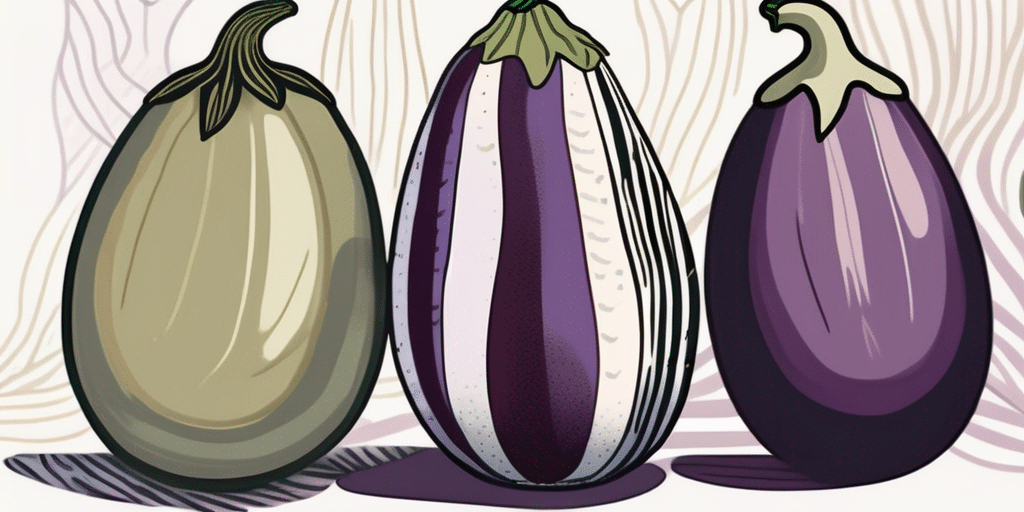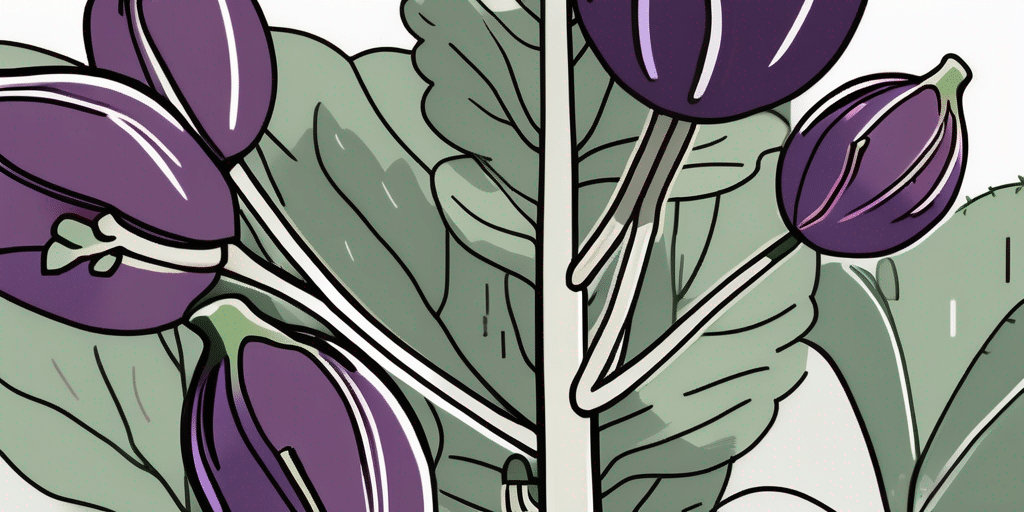The Green Knight eggplant, a variety of eggplant known for its vibrant green color and robust flavor, is a favorite among gardeners and chefs alike. But what do you do when you have an abundance of these delightful vegetables and want to keep them fresh for as long as possible? The answer lies in proper storage and preservation techniques.
Understanding the Green Knight Eggplant
Before we delve into the specifics of storing and preserving the Green Knight eggplant, it’s important to understand what makes this variety unique. The Green Knight eggplant, scientifically known as Solanum melongena, is a member of the nightshade family. It’s characterized by its glossy, jade-green skin and its slightly sweet, nutty flavor.
Unlike its purple counterpart, the Green Knight eggplant is less bitter and has a firmer texture, making it a versatile ingredient in a variety of dishes. However, its unique characteristics also mean that it requires specific storage and preservation methods to maintain its quality and freshness.
Storing Green Knight Eggplant
Fresh Storage
Proper storage of fresh Green Knight eggplants can extend their shelf life and maintain their quality. According to the United States Department of Agriculture (USDA), eggplants should be stored in a cool, humid environment.
Here’s a step-by-step guide on how to store fresh Green Knight eggplants:
- First, avoid washing the eggplant before storing. Moisture can lead to early spoilage.
- Place the eggplant in a plastic bag, but leave the bag slightly open to allow for air circulation.
- Store the bagged eggplant in the refrigerator’s crisper drawer. The ideal temperature for storing eggplants is between 45°F and 50°F.
Following these steps, fresh Green Knight eggplants can last for up to one week in the refrigerator. However, it’s important to check the eggplants regularly for any signs of spoilage, such as soft spots or discoloration.
Long-Term Storage
For longer-term storage, freezing is an effective method. However, it’s important to note that freezing changes the texture of the eggplant, making it softer and less firm. This makes frozen eggplant best suited for cooked dishes, such as stews and casseroles.
Here’s how to freeze Green Knight eggplants:
- First, wash the eggplant thoroughly and cut it into slices or cubes, depending on your preference.
- Blanch the eggplant pieces by boiling them for two minutes, then immediately cooling them in ice water. This process helps to preserve the eggplant’s color and flavor.
- Drain the blanched eggplant and pat it dry with a clean towel.
- Spread the eggplant pieces on a baking sheet and freeze them until they’re solid. This prevents the pieces from sticking together.
- Once frozen, transfer the eggplant pieces to a freezer-safe bag or container. Be sure to remove as much air as possible before sealing.
Properly frozen Green Knight eggplants can last for up to eight months in the freezer. However, for the best quality, it’s recommended to use the frozen eggplant within three to four months.
Preserving Green Knight Eggplant
Canning
Canning is another effective method for preserving Green Knight eggplants. It involves sealing the eggplants in a can or jar and heating them to kill any microorganisms. This process extends the shelf life of the eggplants and allows them to be stored at room temperature.
However, canning eggplants requires a pressure canner, as the high temperatures achieved in this device are necessary to safely preserve low-acidity foods like eggplants. Here’s how to can Green Knight eggplants:
- First, wash and peel the eggplants. Cut them into slices or cubes.
- Blanch the eggplant pieces for three minutes, then drain them.
- Pack the blanched eggplant into jars, leaving 1 inch of headspace at the top.
- Add boiling water or a preferred canning liquid, such as tomato juice, to the jars, maintaining the 1-inch headspace.
- Seal the jars and process them in a pressure canner according to the manufacturer’s instructions.
Canned Green Knight eggplants can last for up to one year when stored in a cool, dark place. However, as with all canned goods, it’s important to check for any signs of spoilage before consuming.
Pickling
Pickling is a preservation method that involves immersing the eggplants in a solution of vinegar and salt. The acidity of the vinegar and the saltiness of the salt help to preserve the eggplants and give them a tangy flavor.
Here’s how to pickle Green Knight eggplants:
- First, wash the eggplants and cut them into slices or cubes.
- Prepare a pickling solution by combining vinegar, water, and salt. You can also add sugar and spices for additional flavor.
- Bring the pickling solution to a boil, then add the eggplant pieces. Simmer for about 10 minutes.
- Pack the eggplant and pickling solution into jars, leaving 1/2 inch of headspace at the top.
- Seal the jars and process them in a boiling water bath for 10 minutes.
Pickled Green Knight eggplants can last for up to one year when stored in a cool, dark place. They make a tasty addition to salads, sandwiches, and other dishes.
Conclusion
Storing and preserving Green Knight eggplants properly can extend their shelf life and allow you to enjoy their unique flavor year-round. Whether you prefer fresh storage, freezing, canning, or pickling, each method has its own benefits and considerations. By following the guidelines outlined in this post, you can ensure that your Green Knight eggplants stay fresh and tasty for as long as possible.
Remember, the key to successful storage and preservation is starting with high-quality, fresh eggplants. So, the next time you find yourself with an abundance of Green Knight eggplants, don’t let them go to waste. Instead, store or preserve them using the methods described above, and enjoy the fruits (or in this case, vegetables) of your labor for months to come.
Keep Your Garden Thriving
Now that you know how to store and preserve your Green Knight eggplants, why not take your gardening skills to the next level? Subscribe for free to How to Grow Everything and learn how to build the garden of your dreams! Receive personalized gardening advice tailored to your grow zone and experience level. Enjoy the best gardening tips, special offers, and deals delivered straight to your inbox – all 100% free, from our family to yours. Don’t miss out on expanding your gardening knowledge. Subscribe now and keep your garden thriving all year round!





